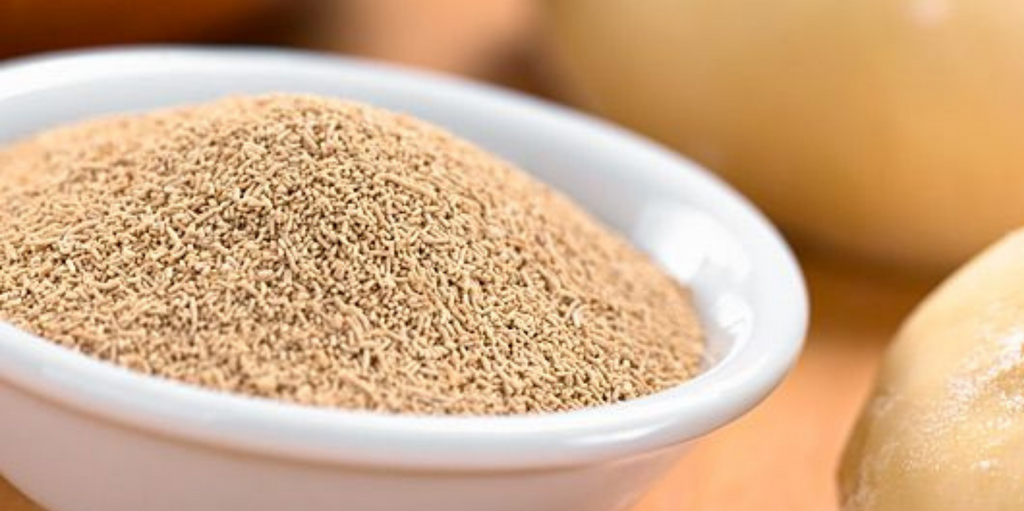The following are vegan protein sources and varieties that incorporate a high volume of protein per segment.
These vegan protein sources will add goodness to your plate.
1. Seitan
Seitan is a conventional protein hotspot for veggie lovers and vegetarian meat. It’s fabricated from gluten, the fundamental protein in wheat. Not at all like numerous soy-based counterfeit meats, it reflects the taste and texture of animal meat when cooked.
Otherwise called mock meat or wheat gluten, it incorporates around 25 grams of protein for every 3.5 ounces (100 grams). This gives it the most significant plant protein source on this rundown.

Seitan is likewise an incredible wellspring of selenium and incorporates little amounts of iron, calcium and phosphorus. You can find this meat substitute in your refrigerated segment of most wellbeing food stores, or make your own adaptation with imperative wheat gluten utilizing a simple formula.
Seitan can be seared, sautéed and surprisingly barbecued. Thus, it tends to be effortlessly fused into an assortment of Plant-based meat diet plans. Be that as it may, seitan ought to stay away from individuals with celiac infection or gluten affectability.
Primary concern:
Seitan is veg meat produced using wheat gluten. Its high protein content, meat-like surface and adaptability make it a famous plant-based protein decision among numerous veggie lovers and vegetarians.
2. Tofu, Tempeh, and Edamame
Tofu, tempeh and edamame all start from soybeans. Soybeans are viewed as a general wellspring of protein. This implies that they furnish the body with every one of the fundamental amino acids it needs.
Edamame is juvenile soybeans with a sweet and somewhat lush taste. They should be steamed or boiled before utilization and can be eaten all alone or added to plant based meat, soups and mixed greens.

Tofu is produced using bean curds squeezed together in a cycle like cheesemaker. Tempeh is made by cooking and somewhat aging mature soybeans before squeezing them into a patty. Tofu doesn’t have a lot of taste, yet effectively assimilates the kind of the fixings it’s pre-arranged with. Similarly, tempeh has a trademark nutty character.
Both tofu and tempeh can be utilized in an assortment of plans, going from burgers to soups and bean stews. Every one of the three contains iron, calcium and 10-19 grams of protein for every 3.5 ounces (100 grams).
Edamame is additionally plentiful in folate, nutrient K and fiber. Tempeh contains a lot of probiotics, B nutrients and minerals like magnesium and phosphorus.
Primary concern:
Tofu, tempeh and edamame all start from soybeans, a total wellspring of protein. They likewise contain great measures of a few different supplements and can be utilized in an assortment of plans.
3. Lentils
At 18 grams of protein for every cooked cup (240 ml), lentils are an extraordinary wellspring of protein. They can be utilized in an assortment of dishes, going from new servings of mixed greens to good soups and zest mixed dahls.
Lentils likewise contain great measures of gradually processed carbs, and a solitary cup (240 ml) gives roughly half of your suggested day-by-day fiber consumption.

Besides, the kind of fiber found in lentils has been displayed to take care of the great microbes in your colon, advancing a sound gut. Lentils may likewise assist with diminishing the danger of coronary illness, diabetes, overabundance of body weight and a few sorts of malignant growth.
Moreover, lentils are wealthy in folate, manganese and iron. They likewise contain a lot of cancer prevention agents and other wellbeing-advancing plant compounds.
Primary concern:
Lentils are dietary forces to be reckoned with. They are wealthy in protein and contain great measures of different supplements. They may likewise assist with diminishing the danger of different infections.
4. Chickpeas and Most Varieties of Beans
Kidney, dark, pinto and most different assortments of beans contain high measures of protein per serving. Chickpeas, otherwise called garbanzo beans, are one more vegetable with high protein content.
The two beans and chickpeas contain around 15 grams of protein for each cooked cup (240 ml). They are additionally fantastic wellsprings of complex carbs, fiber, iron, folate, phosphorus, potassium, manganese and a few gainful plant compounds.

Also, a few investigations show that an eating routine wealthy in beans and different vegetables can diminish cholesterol, assist control with blooding sugar levels, lower pulse and even decrease midsection fat.
Add beans to your eating routine by making a delectable bowl of custom-made stew, or appreciate additional medical advantages by sprinkling a scramble of turmeric on roasted chickpeas.
Primary concern:
Beans are wellbeing advancing, protein-pressed vegetables that contain an assortment of nutrients, minerals and helpful plant compounds.
5. Nourishing Yeast
Nourishing yeast is a deactivated strain of Saccharomyces cerevisiae yeast, sold industrially as a yellow powder or chips. It tastes messy, which makes it a famous fixing in dishes like pureed potatoes and mixed tofu. Nourishing yeast can likewise be sprinkled on top of pasta dishes or even appreciated as an appetizing garnish on popcorn.

This total wellspring of plant protein gives the body 14 grams of protein and 7 grams of fiber for each ounce (28 grams). Braced wholesome yeast is additionally a magnificent wellspring of zinc, magnesium, copper, manganese and all the B nutrients, including B12. Nonetheless, the stronghold isn’t all-inclusive and unfortified healthful yeast ought not to be depended on as a wellspring of nutrient B12. You can buy wholesome yeast on the web.
Primary concern:
Nourishing yeast is a well-known plant-based diet frequently used to give dishes without dairy cheddar flavor by Vegan Food Company. It is high in protein, fiber and is regularly sustained with different supplements, including nutrient B12.
6. Spelt and Teff
Spelt and teff have a place with a class known as antiquated grains. Other old grains incorporate einkorn, grain, sorghum and farro. Spelt is a sort of wheat and contains gluten, though teff begins from a yearly grass, which implies it’s without gluten.
Spelt and teff give 10–11 grams of protein for every cooked cup (240 ml), making them higher in protein than other old grains. Both are incredible wellsprings of different supplements, including complex carbs, fiber, iron, magnesium, phosphorus and manganese. They additionally contain great measures of B nutrients, zinc and selenium.

Spelt and teff are flexible options in contrast to normal grains, like wheat and rice, and can be utilized in numerous plans going from heated merchandise to polenta and risotto. You can buy spelt and teff on the web.
Primary concern:
Spelt and teff are high-protein antiquated grains. They’re an incredible wellspring of different nutrients and minerals and a fascinating option in contrast to more normal grains.
7. Hempseed
Hemp Seed comes from the Cannabis sativa plant, which is infamous for having a place with a similar family as the Maryjane plant. However, hemp seed contains just follows measures of THC, the compound that creates the weed-like medication results.
Albeit not also known as different seeds, hemp seed contains 10 grams of complete, effectively edible protein per ounce (28 grams). That is half more than chia seeds and flaxseeds.

Hempseed additionally contains a lot of magnesium, iron, calcium, zinc and selenium. Also, it’s a decent wellspring of omega-3 and omega-6 unsaturated fats in the proportion considered ideal for human wellbeing.
Strangely, a few examinations show that the kind of fats found in hemp seed may assist with lessening aggravation, just as decrease side effects of PMS, menopause and certain skin illnesses.
You can add hemp seed to your eating routine by sprinkling some in your smoothie or morning muesli. It can likewise be utilized in hand-crafted salad dressings or protein bars.
Primary concern:
Hemp Seed contains a lot of complete, profoundly absorbable protein, just as wellbeing advancing fundamental unsaturated fats in a proportion ideal for human wellbeing.
8. Green Peas
The little green peas regularly filled in as a side dish contain 9 grams of protein for each cooked cup (240 ml), which is somewhat more than some milk. Likewise, a serving of green peas covers over 25% of your day-by-day fiber, nutrient A, C, K, thiamine, folate, and manganese necessities.

Green peas are additionally a decent wellspring of iron, magnesium, phosphorus, zinc, copper and a few other B nutrients. You can utilize peas in plans, for example, pea and basil stuffed ravioli, thai-motivated pea soup, or pea and avocado guacamole.
Primary concern:
Green peas are high in protein, nutrients and minerals and can be utilized as something beyond a side dish.
9. Spirulina
This blue-green growth is a nourishing force to be reckoned with. Two tablespoons (30 ml) furnish you with 8 grams of complete protein, as well as cover 22% of your everyday prerequisites of iron and thiamin and 42% of your day-by-day copper needs.
Spirulina likewise contains respectable measures of magnesium, riboflavin, manganese, potassium and modest quantities of the majority of different supplements your body needs, including fundamental unsaturated fats.

Phycocyanin, a characteristic shade found in spirulina, seems to have incredible cell reinforcement, mitigating and hostile to malignant growth properties. Moreover, it concentrates on connecting devouring spirulina to medical advantages going from a more grounded invulnerable framework and diminished pulse to further developed glucose and cholesterol levels. You can buy spirulina on the web.
Primary concern:
Spirulina is a nutritious high-protein plant-based food with numerous helpful wellbeing improving properties.
10. Amaranth and Quinoa
Albeit frequently alluded to as antiquated or without gluten grains, amaranth and quinoa don’t develop from grasses as other oat grains do. Thus, they’re thought of as “pseudocereals.” All things considered, they can be ready or ground into flours like all the more ordinarily known grains.

Amaranth and quinoa give 8–9 grams of protein for every cooked cup (240 ml) and are finished wellsprings of protein, which is uncommon among grains and pseudocereals. Additionally, amaranth and quinoa are acceptable wellsprings of complex carbs, fiber, iron, manganese, phosphorus and magnesium.
Primary concern:
Amaranth and quinoa are pseudocereals that give you a total wellspring of protein. They can be ready and eaten like conventional grains like wheat and rice.
Did you find the above information useful? Leave a comment below to share your experience!


